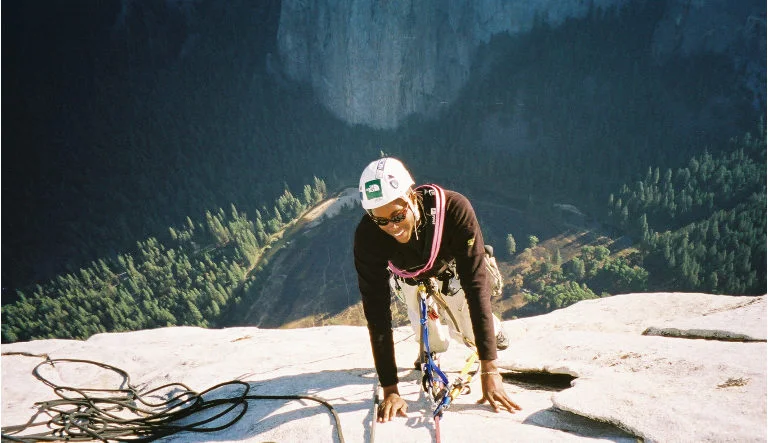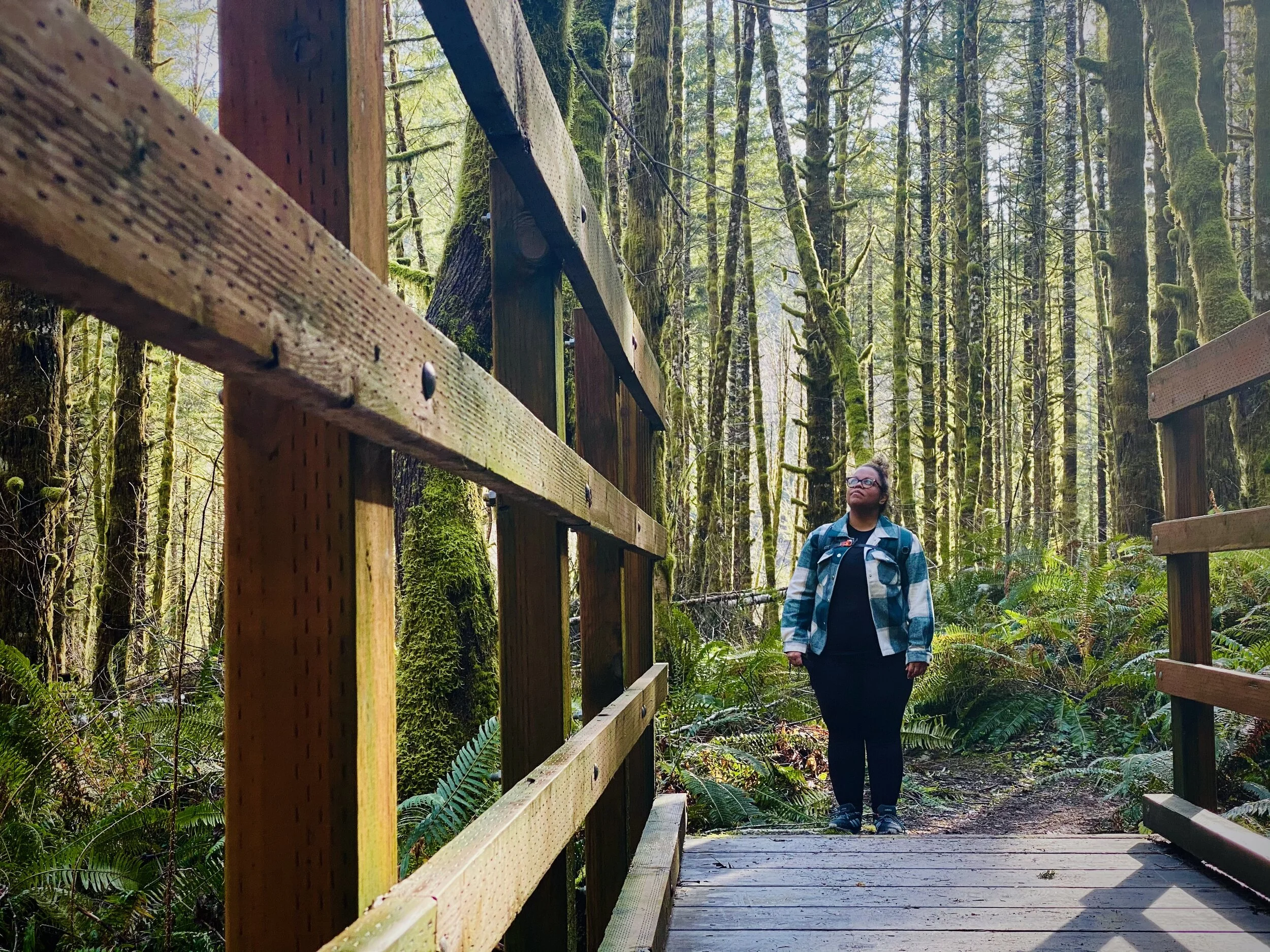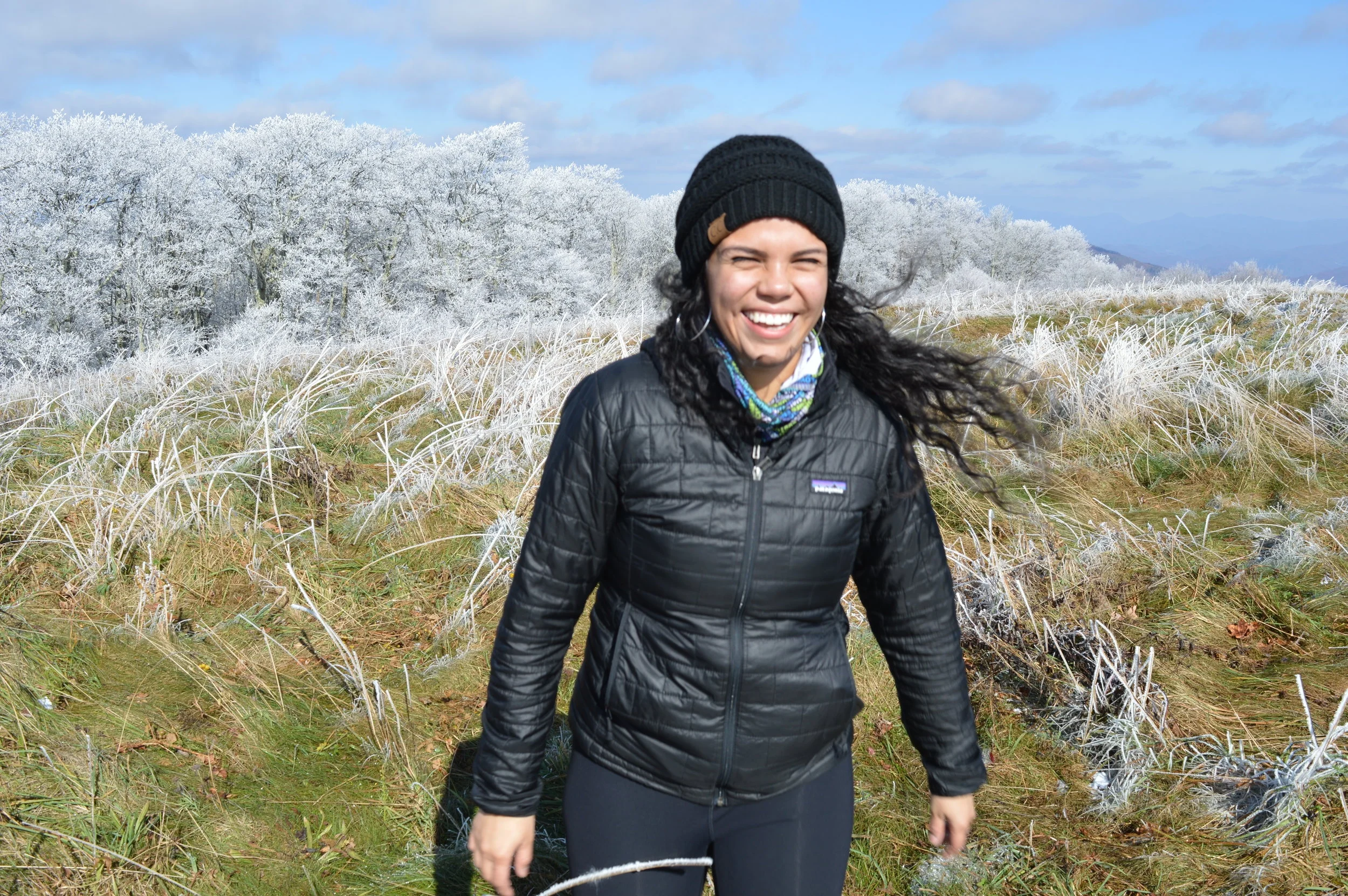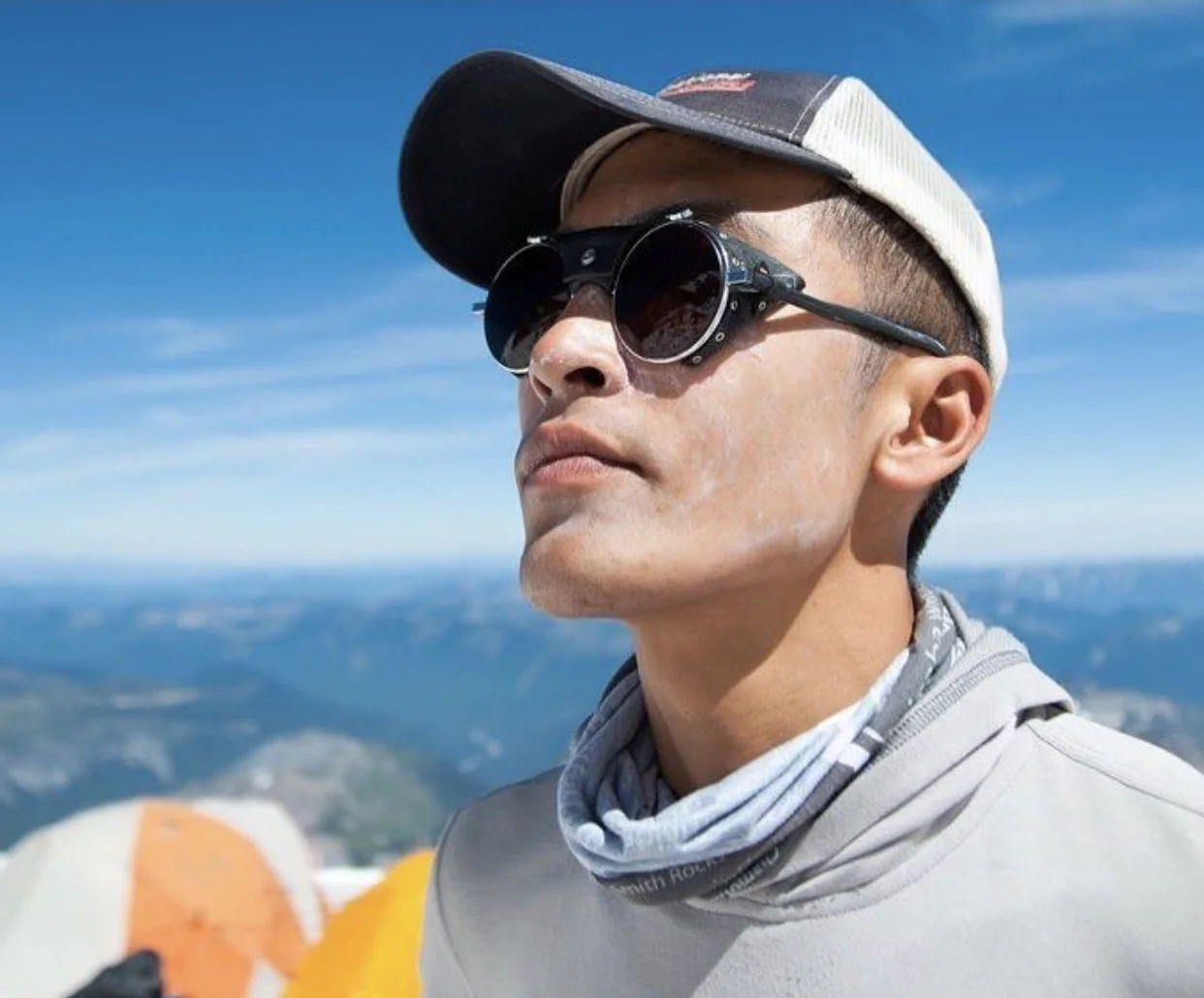Where Do People of Color Fit in White Outdoor Films? My Thoughts as an Emerging Korean American Filmmaker
Photo Credit: Young Mazino, Riding Han (한)
“What did you learn about femininity and masculinity from your journey?”
For the longest time, this was the one question that truly stumped me. I was on stage, mic in hand for a public Q&A at the 2023 Seattle Cranksgiving after party. I just shared my film, Riding Han (한) for the first time to a public audience. To this day I have no idea how I answered this question as I normally blackout on stage but I definitely know that I bumbled through it.
This question sent me on a quest to discover what filmmaking, storytelling and this physical journey meant to me.
Photo Credit: Conan Thai, 2023 Nutmeg Nor’Easter
As an emerging filmmaker of color, I’ve come to realize that there are so many connections and disconnections between storytelling narratives in outdoor films by Black, Indigenous and People of Color (BIPOC).
Which made me start to question, where do we fit into these predominantly white outdoor film narratives? I began to notice a general trend within outdoor films that contain folks of color and those that don’t.
Here’s what I observed:
Outdoor films with white protagonists tend to be more objective based. They typically highlight specific technical skills and show the main character overcoming challenges while they work towards their goal. The storytelling is linear and focused on the individual.
Outdoor films with BIPOC protagonists tend to be collective based. They are often more relational and community oriented. Sometimes the focus is trauma or a cultural identity or both. The storytelling is non-linear and focused on the larger group versus one individual.
Simply put, OBJECTIVE VS COLLECTIVE.
Western (Mountain) vs Eastern (Spiral) Storytelling Narratives
A lot of outdoor films without BIPOC characters usually feature an objective, something to be overcome. That’s very typical of Western storytelling, which focuses more on the plot. This leads to a common three-act story structure also known as the Hero’s Journey. The protagonist sets out on a quest, encounters challenges along the way, completes their quest and returns home.That narrative represents a very western view of storytelling; the focus is on the hero “conquering the mountain” or “slaying the dragon.”
This western story narrative is almost always depicted as climbing the mountain. If you were ever forced to plot story structure in middle school English, this shape will look familiar.
Well, what about outdoor films with BIPOC characters? Do they all follow that structure?
No. Some more closely resemble Eastern storytelling. Instead of following a single protagonist from place to place, challenge to challenge as they climb a mountain or slay a dragon, they focus on how the main characters relate to one another. It’s usually less about achieving a feat and more about uplifting the collective. Sometimes that means working with or around “the dragon.”
There is more likely to be a larger cast of characters as well which is quite common in Eastern storytelling. I’ve also noticed that outdoor films that feature a group of women tend to fall in this category. This looks more spherical in nature.
In Eastern storytelling, these narratives differ significantly in structure, technique and themes. This narrative has a more non-linear narrative structure focusing on spiritual, symbolic and philosophical space. The Eastern narrative likes to go inward instead of upward.
**I do want to clarify that when I say Eastern storytelling, I’m referring generally to non-white/eurocentric narratives. This may not fit your culture exactly but I hope it’s a helpful way to deconstruct western storytelling’s dominance over outdoor filmmaking **
So it led me to start analyzing how western vs eastern storytelling narratives fit in outdoor adventure films.
Why is it like this?
Since this personal discovery, I’ve been digging deeper into the historical and cultural background of storytelling narratives. Here’s what I learned:
The origins of Western storytelling are in ancient Mesopotamian and Greek classics like the Epic of Gilgamesh, the Iliad, and the Odyssey. Over thousands of years, Western storytelling was heavily influenced by Christianity, the Middle Ages, the Enlightenment and 19th Romanticism. It gave us classics like Beowulf. It also trained us to think of western heroes as young, white men.
When you look through this historical lens, it makes sense why western outdoor media is stuck using the same mold for storytelling over and over again. Even though non-Hispanic white Americans are on track to become a racial minority in 2044, societal change is moving at a much slower pace. That includes whose stories get told in outdoor films.
One thing I realized over time is that the Eastern storytelling narrative is more closely aligned with the feminine storytelling narrative. The feminine narrative, which is also spiral shaped, is a holistic approach which is a lot more inclusive, relational and collaborative.
As I dug even deeper, I’ve noticed a lot of commonalities between Eastern storytelling narratives and Indigenous origins stories around the world. My ancestors are from Jeju Island, South Korea. We have The Legend of Seolmundae Halmang (설문대 할망이), a giant goddess and mother figure who built the island.
Other examples of creation stories around the world are the Na'ashjé'íí Asdzáá (Navajo), Pachamama (Inca), The Rainbow Serpent, (Aboriginal Australians), Mawu-Lisa (Fon People of Benin), Tiamat (Babloynian). The list is endless.
So what?
Why I bring all of this up is that the stories that are being told in the West are finally shifting more towards these feminine, eastern, Indigenous, and collective storytelling narratives. Increasingly, these narratives are the ones winning awards, being recognized and honored.
Take the 2024 Academy Awards season, for example; even though Barbie was snubbed, Poor Things—another example of feminine storytelling—won four Oscars. Barbie also dominated at the box office, grossing $1.4 billion. The winner for best short documentary, The Last Repair Shop was a community-oriented film about the Los Angeles public schools free music program. The other nominees,The Barber of Little Rock, Nǎi Nai & Wài Pó, and Island in Between, all focused on a collective, eastern, or feminine storytelling.
In 2023, Asian American comedy Beef picked up multiple Emmy and Golden Globe awards. So did, The Bear, which has such a unique blend of female and marginalized cast and narratives. (Shoutout to my good man, Young; couldn’t have done this without you)
All of Jordan Peele’s amazing movies…I’ll stop.
Yes, there is still a long way to go in mainstream media; and the outdoor media industry is even further behind. I believe that in order for non-western narratives to flourish in the outdoor media space, the industry must continue to make space for new stories to be told—and consider whose voices aren’t being heard.
Side note: Many BIPOC outdoor films directed by white filmmakers still focus the narrative around trauma and that needs to stop. We are not just our pain, we are also the sum of our joy.
How can the outdoor media industry move forward?
Forward Progression: Mountains of Color
“It’s the people that make you feel like you don’t belong, everything else says otherwise.” - Alexandera Houchin (Ultra Endurance Bike Racer & Writer)
Photo Credit: Mindy Wu
I recently returned from the second-ever Mountains of Color Film Festival (MOC), in Jackson Hole, Wyoming. This festival was created by BIPOC to celebrate BIPOC outdoor stories.
For two and a half years, I’ve been dipping my toes into the outdoor media space. That involves attending film festivals as a filmmaker and a student and generally feeling out of place. Much like being in outdoor spaces I often feel like an outsider looking in.
Filmmaking for me has mainly been a solo journey as I didn’t know anyone in the industry. It has been difficult navigating and learning as someone who is absolutely terrible at asking for help. I’ve been thinking about quitting as my life crumbled around me on my path towards pursuing my filmmaking ambitions.
Photo Credit: Mindy Wu
Attending MOC gave me so much validation in my professional journey, especially as a first-time filmmaker and as a filmmaker of color. It gave me permission to feel like my narrative and I belonged. A lot of this validation was because I felt 100% supported. No other film festival I was invited to as a filmmaker invested in me financially and provided opportunities for growth.
The selected films were all incredible, the vibes were melanated and the joy funderous (fun + wonder + thunderous).
Photo Credit: Mindy Wu
It was amazing to see an Indigenous youth and filmmaking mentorship program hosted by National Geographic present as well. As someone who has worked with youth for almost a decade, anything that uplifts the next generation gives me frisson.
But what really shook my soul at Mountains of Color were the incredible femme-identifying people that I met over the weekend–you know who you are! It has always been the women in my life that have healed, propelled and empowered me. It makes sense that I gravitate towards the feminine as my ancestry and my lineage is from a strong matriarchal island of freediving women off the coast of South Korea.
This space is an example of what BIPOC outdoor creatives can be with the right support–the storytellers, shapers and holders of our communities. MOC was the community and the experience that told me that I deserve to be here; that I belong; and that they understand me. It gave me hope for a better and inclusive future for the outdoor filmmaking industry.
See ya’ll at the next one because I ain’t quitting.
Photo Credit: Mindy Wu
So much gratitude to Sofia Jaramillio, Jr. Rodriguez and Leslie Bahn Steen for creating the Mountains of Color Film Festival!!
Got a story and/or need a video editor?
Hit me up please, it's hard to break into this industry–especially in this timeline.
Riding Han (한) Film
Instagram: @bikepak
www.pakeugene.com





















…they have the means, the resources to condition themselves for the single-minded pursuit of an irrelevant task that adds no value to the world, that saves no one, that does nothing to address actual problems. And we, the audience watch to see if, with every possible resource and assurance, they are able to complete the task. Spoiler alert, they usually do.